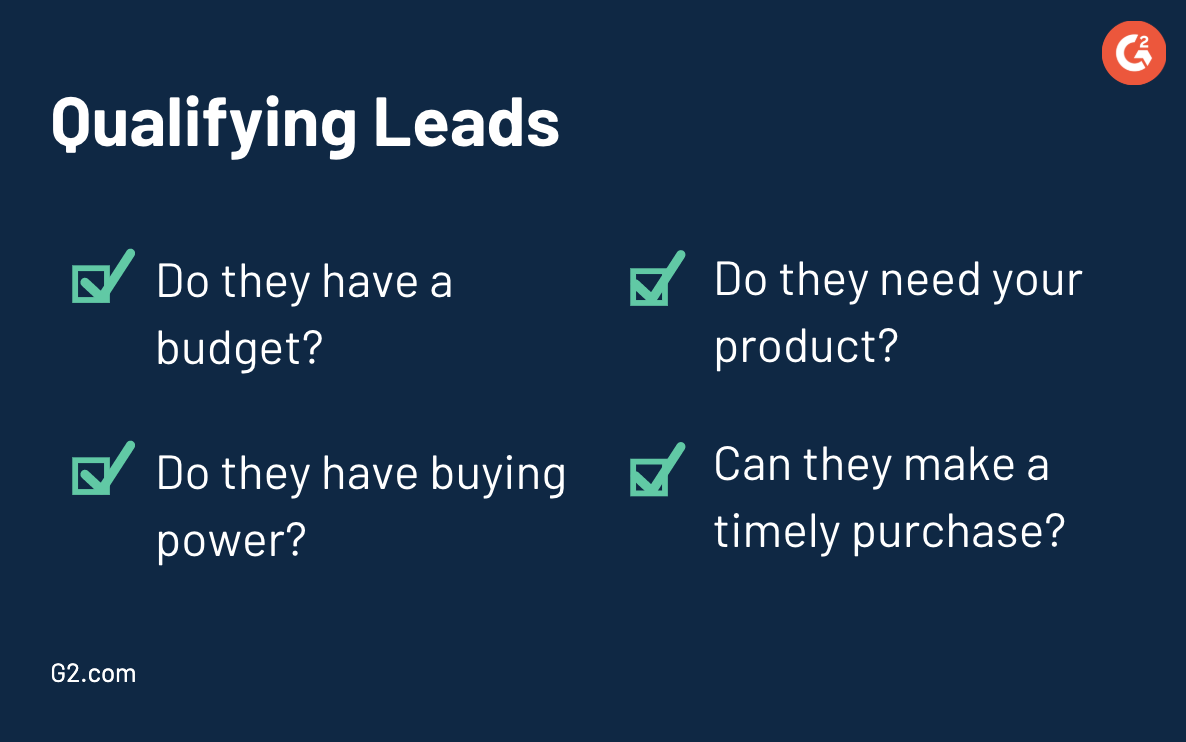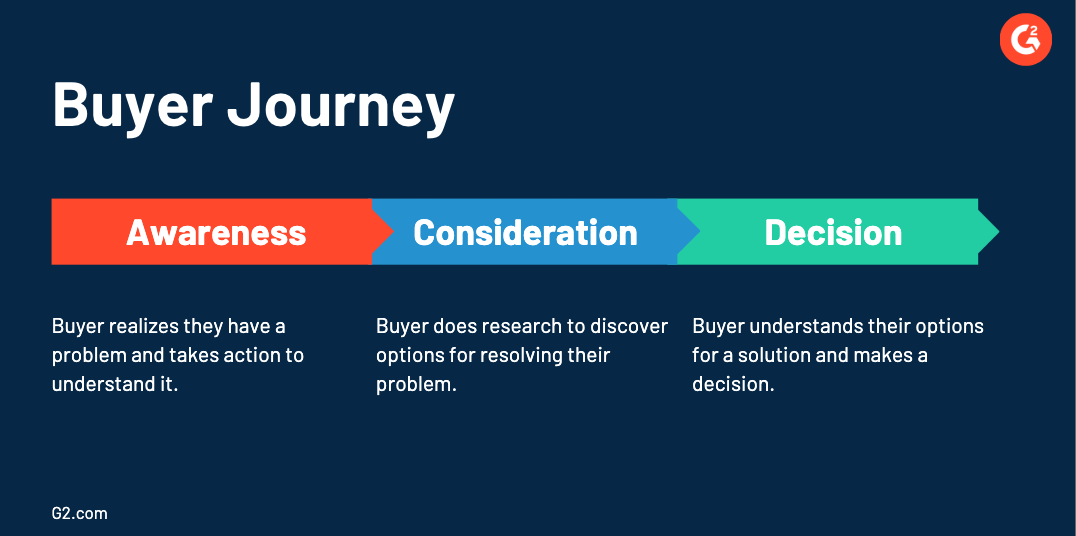Let’s make a deal.
The methods, language, and tools that sales representatives use to close deals can vary widely from person to person and business to business. Improvising, finding creative solutions, and adjusting techniques to appeal to a potential customer can be a fun part of sales. However, the underlying sales process often remains consistent.
A sales process has a set of steps your team follows to turn a potential lead into a customer. While the specific details can differ based on industry, company size, and offered solution, effective sales professionals often rely on a combination of CRM software, sales engagement platforms, and proven sales strategies to drive success.
What are the 7 steps of the sales process?
- Prospecting happens as you source leads from sales and marketing activities.
- Connecting and qualifying involves talking to leads to determine if they're the right fit as customers.
- Needs assessments involve researching prospects and understanding how your product addresses their pain points.
- Demonstrating value involves giving a product demo to show how it solves the customer's problems.
- Objection handling is all about addressing a prospect's concerns and overcoming their objections.
- Closing is the process of reaching a mutually beneficial agreement with the client.
- Nurturing is the ongoing process of building relationships with customers for up-selling and cross-selling.
While some sales reps thrive on spontaneity, establishing a sales process at your business will make the entire department more organized, efficient, and successful.
Dissecting the sales process involves a lot of information. If you are looking for something more specific, use these links to jump ahead:
What is a sales process?
A sales process is a set of steps a salesperson takes to move a potential buyer from being a prospect to a loyal customer. Essentially, it’s the work that a salesperson puts in to make a potential lead realize they have a problem and take action to solve it.
Of course, the purpose of having a sales process is to drive sales well. Some natural-born salespeople might think of following a sales process and roll their eyes. However, leaving a team of salespeople in the wild without an outline of the sales process is a big mistake.
Key takeaways in this article:
- A sales methodology is the philosophy behind your selling strategy, while a sales process includes the concrete steps sales reps will take to close deals.
- The steps in the sales process are prospecting, connecting and qualifying, demonstrating value, handling objections, closing, and nurturing.
- To build a sales process, you must understand current methods, master the buyer journey, define criteria for advancing, format the process, and measure success.
- A good sales process must be customer-centric, clearly defined, repeatable, predictable, goal-oriented, measurable, and adaptable.
Want to learn more about CRM Software? Explore CRM products.
Why should you build a sales process?
Implementing a repeatable process into your sales strategy is a best practice for keeping reps on track. Here are some of the benefits of a well-implemented sales process.
Improved efficiency
Establishing a process in any department is the backbone of efficiency. When sales reps have a repeatable process to refer to, they don’t have to guess what action to take next when dealing with a buyer. This allows them to move through the process seamlessly without hesitation, building their confidence and giving the buyer a better experience.
Fast onboarding
Providing new hires with a sales process to follow will decrease the amount of time it takes for them to onboard. Even if rookie sellers lose their way, they can refer to a sales process map, checklist, or flowchart. This helps new hires learn faster, saves the sales manager time, and gives the customer a better experience—a win-win situation.
Ability to improve
A good sales team always uses data and feedback to refine its sales process to be as efficient and result-inducing as possible. A defined sales process makes it easy for reps and managers to identify and resolve problems.
Accurate forecasting
A repeatable and effective sales process can result in consistent wins. Gaining an accurate sense of the win rate and a general feel for what direction a sale is going helps the team forecast realistic goals and expectations.
Enhanced communication
The selling process does not just include the sales team. Sometimes, customer service, marketing, and account management departments need to step in, and using random sales jargon with them can cause miscommunication. Having a sales process that other departments can also become familiar with will help interdepartmental communication thrive.
Increased revenue
The point of selling is to make money, and when you have a successful process that works for your business, the result is increased revenue. It’s as simple as that. Selling from 9 a.m. to 5 p.m. will give sales reps a deep understanding of the process and, more importantly, how customers operate. The more experience they get, the more they understand who is likely to buy and who isn’t, allowing sales reps to prioritize their time and energy.
Enriched customer experience
Rushing a buyer to a stage in the buyer process that they aren’t ready for will make them feel pressured and result in them walking away. A standardized sales process that focuses on trust, empathy, and offering value helps reps recognize when a buyer is ready to advance so they can make their move.
7 steps in the sales process
While the process might take different twists and turns depending on the customer at hand, following these six steps when interacting with a potential customer is a great way to keep your eyes on the prize and close the deal.
Because of the complexity of the sales process, each step includes multiple tasks that need to be completed before proceeding to the next one. These stages should have specific goals and objectives. Once those are met, the prospect can proceed to the next stage.
1. Prospecting
Prospecting is identifying potential buyers to put through the sales funnel, which is a model that illustrates a customer’s journey to finding a solution to their problem. These potential buyers can be qualified as someone who has expressed interest in your business or someone who, based on demographics and buying habits, can reasonably be noted as someone who would like the solution.
An important part of prospecting is having an ideal customer persona in mind when selling. This way, you can target people who match that persona, resulting in a higher chance of those prospects moving all the way down the sales funnel and becoming customers.
Finding that customer persona is important, but so is taking that prospect a step further.
“Identifying the right prospects doesn’t mean just matching their role to your target customer persona, but going deeper into understanding how your product or solution fits with their specific industry and need,” says Matt Shealy, President of ChamberofCommerce.com.
Prospecting tasks
To best identify who qualifies as a prospect, there are some tasks that a sales representative can complete, including:
- Conducting online research
- Buying lead lists
- Collecting referrals from recent customers
2. Connecting and qualifying
Once you have a solid prospect in mind, the next step is initiating contact with them and determining whether or not they’re worth pursuing in a qualifying process. This can be a phone call, an email, or even a private message on LinkedIn. Certain people and businesses are best suited for your solution (meaning they are more likely to buy), and for the sake of efficiency and moving prospects down the funnel, it’s a good idea to weed all others out.
When qualifying, sales reps use a framework called BANT, which stands for budget, authority, need, and timeline. BANT aims to help sales reps determine whether or not a lead is likely to buy. When speaking with the prospect and getting to know their business better, ask yourself (not the prospect) some questions.

Connecting and qualifying tasks
To properly connect and qualify leads, sales reps can complete the following activities:
- Identifying the needs and pain points of the lead
- Determining their available budget for the tool
- Understanding who the key decision-makers are
Keep track of any information gathered about a prospect in your CRM software. Regarding the sales pitch, you’ll have easy access to updated information to help craft a customized and worthwhile experience for the customer.
Archita Sharma from Automate stresses the importance of integrating automation systems with your CRM, freeing your team to focus on closing deals.
“A salesperson can’t do without automating their daily tasks to save them from hours of manual and mundane work,” she says.
3. Needs assessments
Needs assessment in the sales process involves identifying and understanding a potential customer's specific needs, challenges, and goals.
It's a crucial step that helps sales representatives understand customers' unique needs and tailor their approach accordingly. This builds stronger relationships and improves customer experience and satisfaction. Reps can offer targeted solutions by identifying pain points and gaining a competitive advantage.
By effectively conducting a needs assessment, sales representatives can increase their chances of closing deals and building long-term customer relationships.
Needs assessment tasks
Here are some key tasks that fall under the needs assessment phase of the sales process:
- Gather information about the customer, industry, and product
- Learning about the customer's aspirations and desired outcomes
- Determining if the customer is a good fit for the product or service
- Establishing a connection with the customer based on their needs
4. Demonstrating value
With those needs in mind, your next job is to present your solution in a way that helps the prospect see how it will resolve their problem. Whether you are meeting in person, chatting on the phone, or talking over video conferencing tools, the value demonstration is where you create a customized case that takes the customer’s specific needs and matches them with a feature your solution offers.
Do not wing it during this stage of the sales process. Your qualified lead’s time is valuable, and if you enter a value proposition meeting without anything prepared, you can kiss that sale goodbye.
Preparing isn't enough to be successful when demonstrating value. Make sure your presentation aligns with their needs. Based on the information you have gathered on the prospect, tell them what they want to hear (while remaining truthful) about your business. Anticipate and address their questions and concerns.
Related: Learn how to give a killer sales pitch by checking out some examples that will inspire you.
It’s important to come off as a trusted source of information and provider of a solution rather than a salesperson trying to meet a quota. Chances are, the person you are selling to has been in this position before, whether in a professional setting or not. Make it all about them and what they want.
According to Maria Dinca from Planable, value demonstration is the most important part of the sales process for sellers in the SaaS sphere.

Value demonstration tasks
Demonstrating the value of your business to the lead is the most important part of getting them to convert to a sale. For this stage, make sure you:
- Research, research, research
- Schedule a presentation
- Recommend specific solutions
5. Handling objections
Even after you’ve demonstrated the value of your business to the best of your ability, the prospect might still hesitate before committing to buy. Whether it be due to budget, timing, or fear of implementing another tool at their business, it’s the job of the sales rep to address these issues by re-demonstrating the value of the business or talking about the risks associated with not resolving this problem.
During this phase of the sales process, it’s important to remember that you are there to help the prospect solve a problem, not make a sale. If you lose sight of that, they will notice and be less likely to buy. The best way to do this is to show empathy when addressing their concerns. Put yourself in the buyer’s shoes and show them that their hesitations are valid.
Handling objection tasks
Handling objections from the prospect can happen immediately after demonstrating value or at a later date. Here are some tasks that it might include for the sales rep:
- Anticipating customer questions and concerns
- Following up
- Proving the value of your business over other options
6. Closing
After all objections are handled, your prospect will decide to buy or walk away. What you do during the closing stage can ultimately alter your decision. Mark Fershteyn from Recapped notes the importance of closing, even if it seems like a done deal.

Fershteyn focuses on the “last mile of sales,” which comes after a verbal agreement. “It’s the most important part,” he notes, “yet the part of the sales process is the most neglected.”
Closing tasks
If you’ve completed the stages before closing successfully, making the sale might seem simple enough. However, don’t sleep in this phase. A sales rep must complete some crucial tasks to close the deal. These steps include:
- Negotiating final prices
- Acquiring a signed contract
- Delivering the solution
If the closing isn’t successful, don’t give up. Here are some alternate tasks to complete if the closing doesn’t result in a sale:
- Execute and deliver a follow-up plan
- Schedule the prospect for a future engagement
7. Nurturing
Depending on your experience or the customer's willingness, the first five stages of the sales process can be completed rather quickly. But it doesn’t end there. Once the customer makes a purchase, you can consider this the beginning of your relationship. And what does any relationship need to thrive and mutually benefit both parties? Nourishment.
The nurturing phase includes any activity that adds value to the relationship you’ve just started with the customer. What's the key to building a solid relationship with a customer, you ask? Why don't you take it from G2's Danny Read, recipient of the 2019 Account Executive Of The Year award?

Offering support after the sale, helping with implementation, and providing information on updates are good ways to prove to them that this relationship is worth maintaining. Your company’s CRM software can be used to nurture and improve your relationship with your customers.
Nurturing tasks
If you play your cards right, that first purchase can result in a long-term relationship with a customer. To get there, here are some tasks:
- Provide post-sales support
- Discover ways to up-sell and cross-sell
- Ask for reviews
Those are the typical stages of a sales process, and understanding them and their associated tasks is crucial when building one for your business.
How to build a sales process
Any sales manager must offer a process to all salespeople to ensure their team stays on track. With the steps in mind, let’s review how to build that process.
1. Understand current sales methods
Unless you create a sales process on the first day of your company’s existence, your current salespeople likely already follow a general selling process. Before establishing a process, it’s important to understand your sales team’s current approach to selling.
Ask them what they do from the beginning to the end of their interaction with a potential customer, and then fill in the blanks from there. Here is a list of questions you can ask to get a firm grasp of how your sales team works:
- How are leads acquired?
- How are leads assigned?
- How do sales reps make first contact with the lead?
- How many attempts have been made to contact the lead?
- What questions are asked in the initial conversation?
- How do the sales reps follow up?
- Are any files sent to the lead?
- How is the company’s solution presented?
- Are there any pressing moments when negotiating?
- Was the lead lost? If yes, why?
- Was a sale made?
- What did contact with the customer look like after the sale?
If the sales team can’t answer all of those questions, don’t sweat it. As long as you understand how the sales team currently operates when selling to customers, you should be well on your way to creating a process they can relate to.
2. Master the buyer journey
A sale cannot happen without a customer, so it only makes sense to alter your sales process depending on where the customer is in their journey to solve a problem. Not every customer interaction is going to look the same. In some cases, customers are more ready to buy than others and don’t require starting from square one. Depending on where the buyer is in their decision-making journey will affect the way you approach them.

Awareness stage
The awareness stage starts with a person who has a problem but doesn’t know what it is yet. Once they realize they have a problem, they will take action to understand and put a name to it.
There should be no attempts to sell to buyers in the awareness stage. Simply help them understand the issue at hand and that there are repercussions for not solving it. As a solution provider, marketing will play a big role during the awareness phase.
You need a solid SEO strategy to help your website appear on these researchers’ radars. Ensure the content you produce to market your business focuses on educating the buyers rather than your product or service.
Tools like marketing automation software can help you track who is reading your marketing materials to help identify their problem, giving you a list of prospects.
Consideration stage
Now that the buyer understands their problem and that a solution is possible, they will continue to do research that will reveal options for resolving it. If you are lucky enough to be one of the contenders that a buyer continuously researches, you can connect with and qualify the customers worth pursuing.
Demonstrating your business's value to the buyer also happens in the consideration stage. At this point, they will compare all the available options and look for specific product offerings and personalized demos to see how this particular solution will help relieve their pain points.
The initial value demonstration won’t always guarantee buy-in, and you might have to handle some objections to justify your solution is best.
Decision stage
With the research done in the awareness and consideration phase, the buyer will now be educated enough to understand their options for a solution. And finally, a decision will be made. Of course, potential buyers will have already analyzed their options' features, benefits, and pricing. Other factors that will determine the outcome of the decision phase include details that will improve the customer experience, including implementation, support, and preparation.
It’s wise to have content that speaks to the decision-making audience, like what makes your product special and the best option for that particular group. Customer reviews and testimonials will also play a key role here.
If they choose your solution (kudos!), don’t kick your feet up just yet. The actions you take while closing, such as negotiating pricing and getting the solution to the buyer, can still affect how they feel about your solution. Post-sale activities, like providing training and support, implementation guides, and more advanced content, will help you nurture your relationship with your new customer. Any way that you can continue to prove the value of your solution to your customers will convince them to remain loyal customers.
3. Define criteria for moving forward
If a sale is going well, reps can get excited and move the process along too quickly, which is a turn-off for the buyer. To avoid this, define exit criteria by identifying what needs to happen with a customer before moving on to the next step in the sales process.
The best way to do this is by matching steps in your sales process with those in the buyer journey. Ask yourself these questions to create exit criteria:
- What does the rep need to know at this point?
- What information do they need to make a successful sale?
- What actions must the rep take during each phase of the sales cycle?
- What does the rep need to say?
- What does the rep need to be relaying to the customer?
- What content should the rep be showing the customer?
4. Format your sales process for your team
Now that you have the necessary stages of a sales cycle in mind, it’s time to put it all together in a way that the team will understand and use daily. There are a couple of ways to go about this, and the beauty of these structures is you can easily move from one to the other if it doesn’t work well at your business.
Sales process map
For some people, arranging the sales process into vertical columns makes the most sense. The stage's name is at the top of the map, and the tasks associated with that step are listed below it. Move from left to right as you progress through the sales process.
Sales process checklist
The sales process checklist still separates each step with different tasks; it’s formatted differently. The real focus here is on completing the objective associated with each stage. This option is typically best for simpler sales processes.
Sales process flowchart
A checklist or sales map is a good option for businesses with simple sales processes that tend to follow the same path. However, if you have a more complicated sales process that involves a lot of ups, downs, lefts, and rights, the flowchart is a good call.
A sales flowchart anticipates certain scenarios a rep might encounter and then gives them the appropriate course of action. The key to the flowchart is the presence of a backup plan that doesn’t result in simply letting the sale go.

Buyer journey sales process
The buyer journey is present in all sales cycle stages, but some businesses find it most effective to make it the center of their sales process. In this format, the criteria for moving forward focus on what the buyer has to do, not the sales rep. Both sides (the buyer and sales rep) must match each other to move on.
5. Measure success
At this point, you have a sales process related to what the representatives were originally doing, which takes the buyer’s journey into account. As your sales process progresses and reps find new and creative ways to move through it, measuring what success looks like is crucial. Here are some key metrics that are important to keep in mind:
- How long should a prospect stay at each step?
- How often are prospects requesting demos?
- How often do prospects close after a demo?
- How often do buyers become loyal customers?
When you have solid answers to these questions, you can evaluate your sales process and make changes where necessary.
Sales process vs. sales methodology
While closely related, a sales process and a sales methodology are two different ideas, and understanding the distinction is important before we proceed.
A sales process is a concrete set of steps that a rep takes to move customers down the pipeline and make a sale.
A sales methodology is the philosophy behind your sales process, providing a framework for how you want the process to be carried out.

Think of your sales process as a roadmap and the sales methodology as the different ways it can be approached. A sales methodology isn't necessary to be successful when selling, but it helps ensure that interactions are professional, impactful, and beneficial for the customer. Here are a few common sales methodologies:
- Challenger: the seller focuses on teaching the prospect.
- Solution: the seller focuses on the prospect's pain points.
- Consultative: the seller acts as an advisor to the prospect.
- Inbound: The seller focuses on creating content that will result in customers contacting them first rather than vice versa.
Your sales methodology might not be directly included in your sales process, but it’s in spirit.

More than your average newsletter.
Every Thursday, we spill hot takes, insider knowledge, and news recaps straight to your inbox. Subscribe here
Qualities of an effective sales process
To experience the intended results of establishing a sales process, it must acquire the following qualities:
- Customer-centric: The customer must always be the focus. Their actions will determine the sales representative’s actions, not vice versa. Make sure the customer is informed and empowered.
- Clearly defined: The sales process needs to be laid out in a way that is easy to follow and understand.
- Repeatable: Each rep should be able to repeat the process without any confusion.
- Predictable: As reps get used to the process and understand their buyers better, the outcomes should be expected and predictable.
- Goal-oriented: The goal should always be to find the customer the solution they need to relieve their pain points. Every objective along the way should support that goal.
- Measurable: You should have distinct points where the rep knows to move on with the process. All end results should be quantifiable.
- Adaptable: Business climates, buyer needs, and technology can all change. Your process should be able to adapt to any change that might affect your business.
Metrics to measure sales process effectiveness
- Lead conversion rate: The percentage of leads that convert into customers.
- Sales cycle length: The average time it takes to close a deal.
- Win rate: The percentage of deals closed compared to the number of opportunities.
- Average deal size: The average revenue generated per closed deal.
- Customer acquisition cost (CAC): The total cost of acquiring a new customer.
- Customer lifetime value (CLV): The total revenue a customer generates over their lifetime.
3 common sales process mistakes
We all make mistakes, but some are more common for people creating and using a sales process.
1. Letting the sales process be open to interpretation
For your sales process to work for every team member, it is important to provide specific actions to complete while they work through it. This is especially important when qualifying criteria for moving from one step to another. Once you have decided on a process for your team, document and share it; make the tactics very clear so they can go through it how you want them to.
2. Being strict with your sales methodology
Different sales methodologies work for different companies, but this can be played around with a little. Pieces of one methodology can be mixed with others to create something unique for your business. As your business changes, adopting a different methodology might be necessary to stay on the right track.
3. Neglecting that it’s a work in progress
While you don’t want your sales process to be open to interpretation, that does not mean you cannot change it. You must constantly evaluate and modify it to ensure it is as effective as possible. Even if everything seems to be going well, you should always ask sales reps for feedback to be aware of any red flags.
Continuous improvement of the sales process
To ensure your sales process remains effective, regularly review and refine it by:
- Gathering Feedback: Collect feedback from your sales team and customers to identify areas for improvement.
- Analyzing Data: Use sales analytics tools to monitor performance and identify trends.
- Training and Development: Invest in ongoing training for your sales team to update them on best practices and new tools.
- Adapting to Changes: Stay agile and be ready to adapt your sales process to changes in the market, customer behavior, and technology.
Sell away
Establishing a sales process is important in building a winning sales team and creating mutually beneficial customer relationships. Start building your process today and remember to stress its importance to the sales team, don’t be afraid to make adjustments, and always focus on the customer.
Sales representatives can’t close deals without the right tools. Check out the best sales tools to ensure your team is properly equipped.
This article was originally written in 2019. It has been updated with new information.

Mary Clare Novak
Mary Clare Novak is a former Content Marketing Specialist at G2 based in Burlington, Vermont, where she is explored topics related to sales and customer relationship management. In her free time, you can find her doing a crossword puzzle, listening to cover bands, or eating fish tacos. (she/her/hers)
